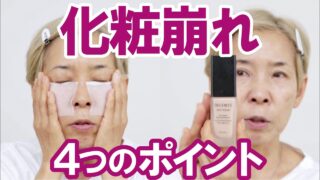If you find our learning video is helpful, please subscribe to our channel.
https://www.youtube.com/channel/UCc-Nk8UV0HIG6XucwIpfG4g/
2020s: The era of work-based Japanese language education?
With the clear sorting policy between study abroad and work through the establishment of specific skills, it is likely that the overwhelming majority of Japanese language learners in Japan will be work-oriented.
We may say that we are back in the 1970s again.
Organising the tried and tested policy on foreigners as a solution to the manpower shortage since 1980
The following is a brief summary of foreigner policies, mainly in the employment sector, in a separate section.
The country started to move in the 70s to use foreigners to solve manpower shortages, and in the 80s, reports emerged around the ministries that foreign labour should be utilised.
Iran, South America, Asia for technical training, and so on, usually in 10-20 year increments, with repeated failures and conversions.
Late 80s, the era of people of Iranian descent.
It was in the 1980s that, as now, the labour shortage led to a full-fledged attraction of people with various visa statuses.
Because there was a mutual visa exemption agreement with Iran (concluded in 1974), the number increased at once during the bubble period (late 80s), peaking at nearly 200,000 (40,000 illegal residents), but then declined rapidly with the bursting of the bubble → became illegal residency → abolished the exemption agreement in 1992.
The number quickly declined to a few thousand.
90s: people of Japanese descent in South America.
At the same time as above (Immigration Control Act revised in 1989), the Ministry of Justice policy allowed South American Nikkei to immigrate with their families.
Around 300,000 people in 2005.
However, in the late 2000s, jobs declined sharply and, for one year from April 2009, 300,000 yen was paid to those wishing to return home and 200,000 yen per family member. The programme was implemented and 21,675 people returned to their home countries under this system.
Specified skills (2019-)
Mainly Southeast Asia.
Starts in 2019.
The labour shortage is expected to peak at 6.44 million in 2030, of which up to 300,000 (some say 100,000) will be in nursing care and nursing, and several hundred thousand (500,000 or less?) in other fields among foreigners. The shortage of manpower is expected to increase to around 2035.
The manpower shortage is said to level off around 2035 and to be eliminated by 2045.
In other words, the question is what to do for the next 25 years.
The big difference from the past is that
There are many rivals in the developed countries of Asia, where labour shortages are also increasing due to the ageing of the population, and moreover, China, South Korea and Taiwan are on track to overtake Japan in terms of hourly wage levels.
Competition with Europe and North America in nursing care and nursing is also intensifying.
Japan’s economic power is declining and its competitiveness and attractiveness are declining.
There are no advantages to learning Japanese outside Japan.
China’s economic power and South Korean pop culture are more popular among young people.
The image of Japanese culture as belonging to (older) Western snobs.
Furthermore, it has always been a challenge
The difficulty of learning Japanese is another major bottleneck.
It is not a ‘world crushing language’ like Chinese, nor does it have a simple writing system like Korean.
English is rarely spoken in Japan, so it is not possible to use English (learned in compulsory education) when the need arises.
The only card left to play is to increase the treatment of foreign workers because the
(Since it is no longer possible to maintain an advantage in competition on the basis of hourly wage (rather than suddenly waking up to human rights), the option of improving the work environment, permanent residence pathways, etc. is now necessary.
Even so, competition is getting tougher and it is difficult to secure foreign workers.
It is likely that more discounting (i.e. better treatment) will be necessary in the future.
In other words, Japanese language skills, which are only a hurdle to attracting foreign workers, are unlikely to be emphasised in the future, and it will not be a simple matter of Japanese language education being enriched by an increase in the number of working foreigners.
In the future, we believe that the only way forward in Japan is through comprehensive public support for Japanese language, not by status of residence or by ministry.
#LearnJapanese
#skincare
#makeup





















コメント